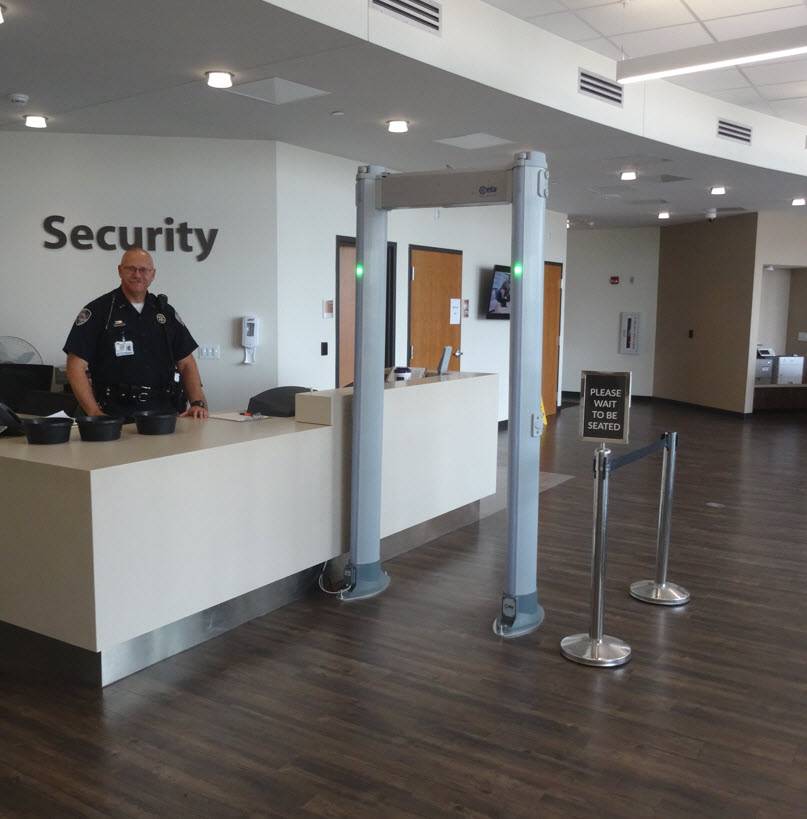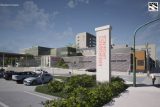Jon Huddy, MArch, BA, AIA, NCARB
President and Senior ED Designer
Huddy HealthCare Solutions
Continuing Violence in EDs
A top priority of every ED design project that I have been involved with is the safety and security of the staff, patients and public. However, these architectural projects have a long gestation period: It can be years for your healthcare organization to consider a renovation or expansion project, define the scope, define the funding mechanism, solidify a budget, and actually design and construct a “safer” ED. If you’re like many of my ED clients, your facing immediate needs to create a more secure environment. The key is to define, prioritize and act… as quickly as possible on making your ED a safer place. We have defined a few considerations below based on a 200+ checklist that we have developed for the analysis of an ED environment and what impacts safety, security, efficiency, and effectiveness. Take these rapid steps to immediately address your safety concerns.
Define Safety Issues
Rapidly evaluate your existing environment and document any, and all, safety concerns. Involve the staff and ask them to make actual notes (and mental notes!) throughout their shift as they realize how their environment may be changed to increase safety. Find a place in the break room to log all comments. This list will spur other in the department to add their thoughts and ideas.
“Line of sight” supporting visual control is very important in emergency departments, both for patient and staff safety. Are you able to visually control entry doors and access corridors? Are their blind spots in corridors due to equipment, carts or moveable objects blocking visibility across the ED clinical area? Are there potential escape paths that are filled with equipment/carts that would impact the ability for staff to quickly retreat should a patient or family member become violent? What is your plan of action should a weapon be drawn in the ED? Can your staff be trapped in a nurse station because there are limited access/exit points in the work area? Where are mental health patients evaluated? How consistent is communication with your security personnel and local police? Which brings us to partnering with these key security and police members.
Partner with Security and Local Police
Assuming you have a security presence in the ED, is it located in the best area to support your security needs. Don’t let an old security booth be the only location for security to be stationed if that is no longer in the right location. Can security monitor walk-in patients but also get to the mental health ED treatment rooms rapidly and with no delay (like having to go through multiple doors and having to travel down long, congested ED corridors)? Work with Security staff to rethink the plan and location for security staff. Maybe your ED needs them in the nurse station more than they need them in the public area.

Are there security cameras in the right locations in your ED? Should cameras be relocated, or new cameras added to gain more visual control of key areas within the ED? We have added video monitors, that show multiple camera locations at reception desks, in break rooms, and in physician work rooms, all in an effort to raise awareness of what is occurring “in and around” the ED.
Work with your engineering team to see if panic buttons are in the right location (or if they are even operational at this point!). Where is the “alarm” sent when activating a panic button? Maybe the “alarm” needs to go to more than just a single security location that may not even be staffed 24-hours a day. Can alarms be sent to break rooms and work rooms so more staff are alerted to security events?
Where are your behavioral health patients being treated and does the location need to be re-evaluated? Is it worth moving the mental health room to a new location to support better visual and physical control of the space? Should different rooms be converted to anti-ligature to support a safer environment? We believe it is no longer appropriate for staff members covering behavior health patients to be placed down a hidden corridor at the back of the ED, completely cut off from other staff. Behavioral health ED care areas need to be in locations where staff can maintain visual connection to other team members.
Get Feedback, Prioritize, and Define Quick Wins
Gather your full list of issues and ideas and start to set priorities. Work with your facilities engineers to help define what can be done at no cost, limited cost, or more extensive cost. By defining what can be done for “no cost” (like just moving equipment or carts to create more visibility or quicker escape paths) you may be able to define “quick wins” for staff and patients. By defining “limited cost” items that may include adding more cameras or converting rooms to anti-ligature, you may find that small costs can make huge impacts on your safety and security. When defining more costly renovations, such as asking if walls can be removed for better visibility, or adding interior windows, to be able to increase visual supervision across the ED, you can work with your Facilities Staff to prioritize what is realistic to accomplish at reasonable costs.
Get to Work… Now!
Getting feedback from the people on the floor ensures that they are engaged in a culture of safety and that the leadership of the department believes it is a priority. Consider security ideas with regards to walk-in/public areas, EMS entry points, forensic patients, general ED care areas, and behavioral health patients. While I doubt that we will ever be able to proactively identify, and prevent, the exact moment that a person intends to strike-out at another person, we must do all we can to proactively development an environment that elevates the level of safety for patients, families, staff, and providers. If interested in Huddy HealthCare applying our comprehensive analytic scorecard to your current ED, please contact me directly at j.huddy@huddyhealthcare.com




